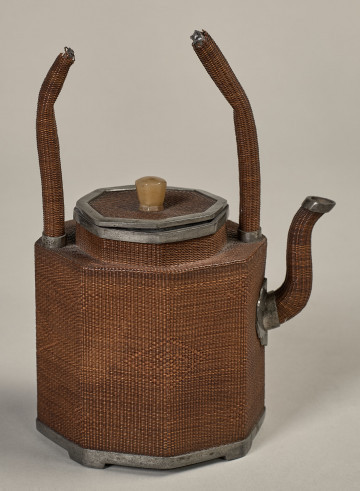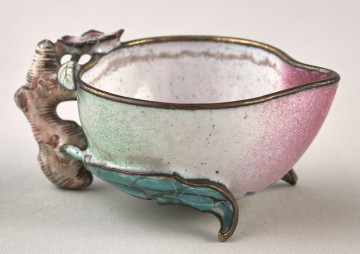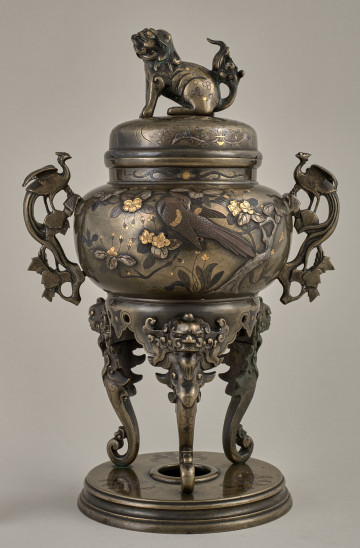
Teapot
19th (?) century
Castle Museum in Łańcut
Part of the collection: Orient
The copper plate covered with white falangcai enamel type referred to as Cantonese enamel in famille rose color scheme. In the middle of the mirror there is a goddess He Xiangu standing on water and behind her a sea deity with a fruit called "Buddha's hand". On the reverse there is a ruby-colored plate, the bottom is white with two peach fruits "the fruit of the Immortals". He's story was often the pretext for decorating utilitarian objects with motifs from a classical text from the 7th century BC. She is depicted flying or levitating, with a lotus flower or a basket of flowers or of gifts of the forest. According to the literary work, this character was born with six golden hairs. As a teenager, she had a dream in which an old alchemist revealed her destiny. She decided not to marry and to devote her life to the study of the Dao philosophy. He Xiangu moved to the mountains and fasted, consuming only the needles of pine trees. She was able to sleep on a frozen ground and on ice. Her wisdom amazed the teachers and masters of that time. She quickly attracted the attention of Empress T'ang, who wanted to know her secret, the secret of longevity so that she could rule until the end of the world. Lady He could sense this selfish intention. When the empress's men showed up to capture her, lady He covered her body with bugs and pretended to be dead. The soldiers were fooled and they left. He survived in the mountains approximately 200 years. She didn't need any more time: her body became so light that it unnoticeably pulled away from the ground and flew up to the land of the Immortals. The second version of the legend holds that the mother-of-pearl eaten by her gave her immortality - she became one of the Eight Immortals of Taoism.
Author / creator
Dimensions
height: 1 cm
Object type
Orient
Technique
enamelling
Material
copper
Creation time / dating
Creation / finding place
Owner
Castle Museum in Łańcut
Identification number
Location / status

19th (?) century
Castle Museum in Łańcut

18th-19th century
Castle Museum in Łańcut

2nd half of the 19th century
Castle Museum in Łańcut
DISCOVER this TOPIC
Castle Museum in Łańcut
DISCOVER this PATH
Educational path